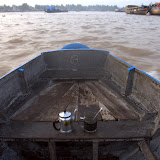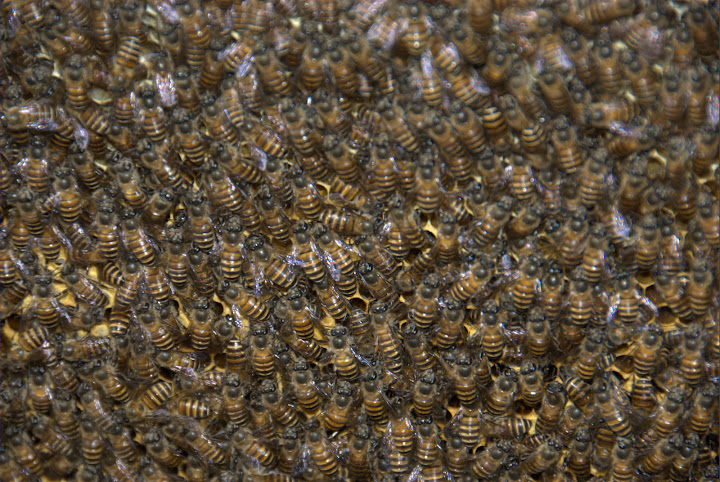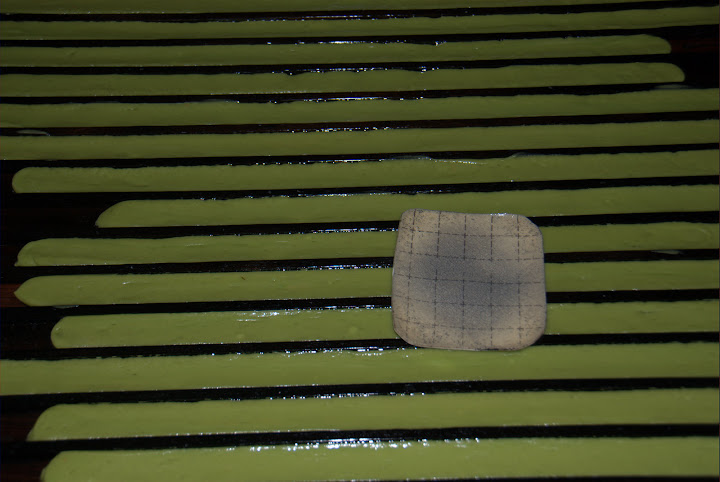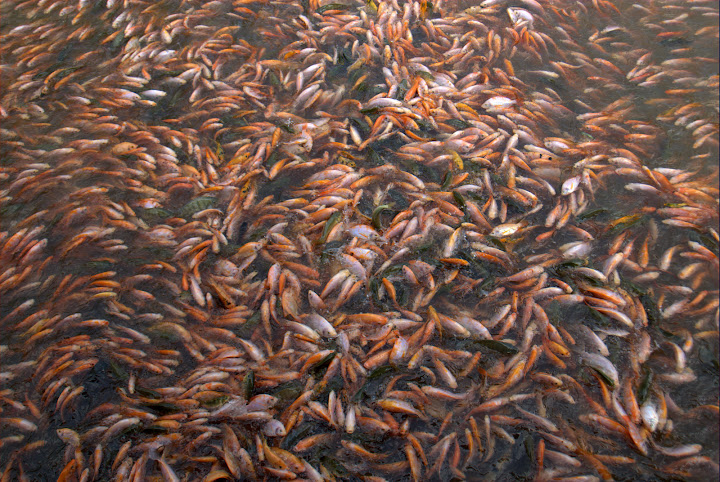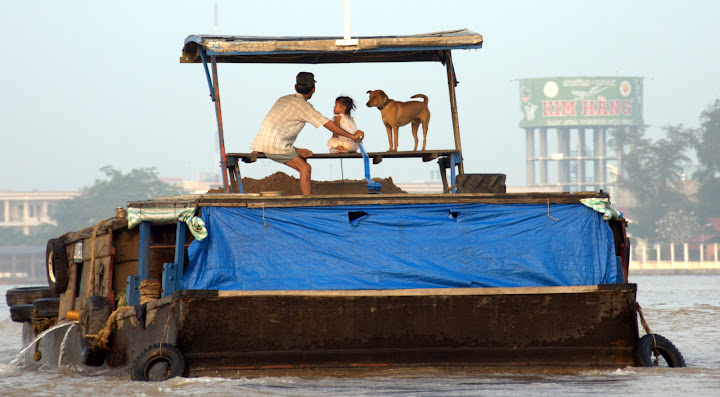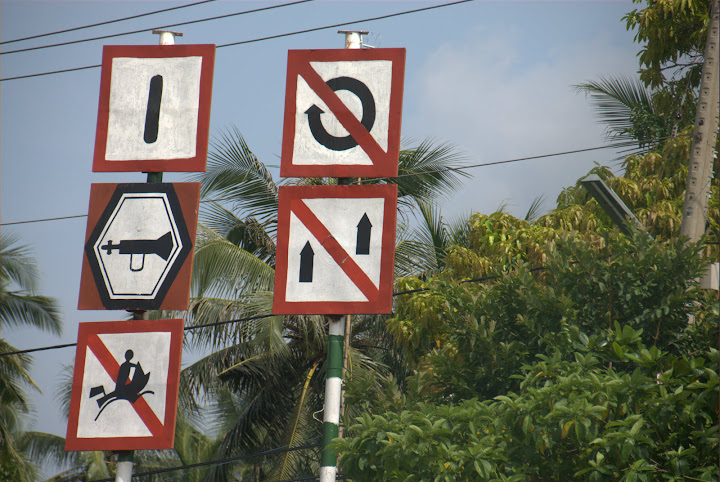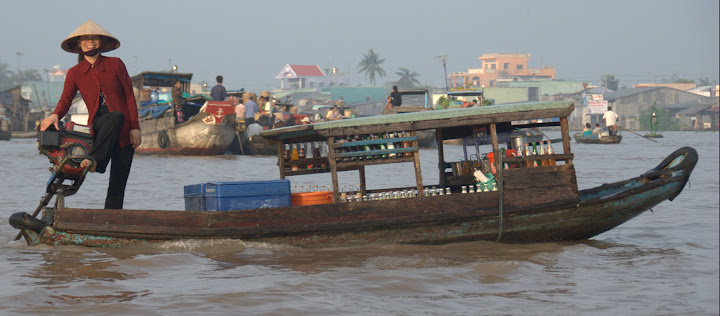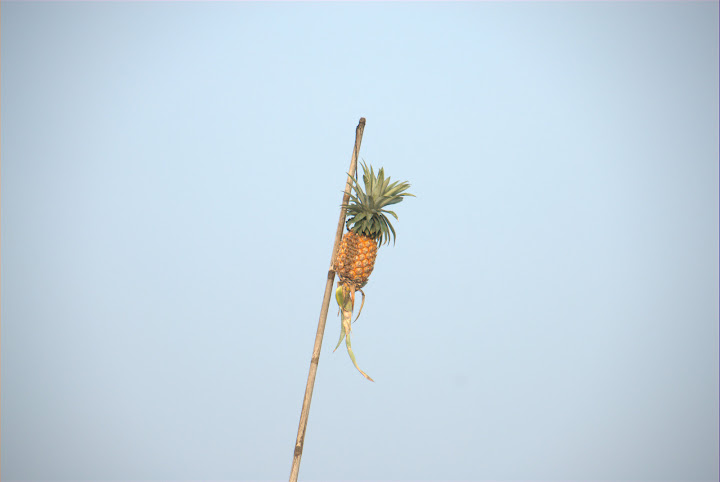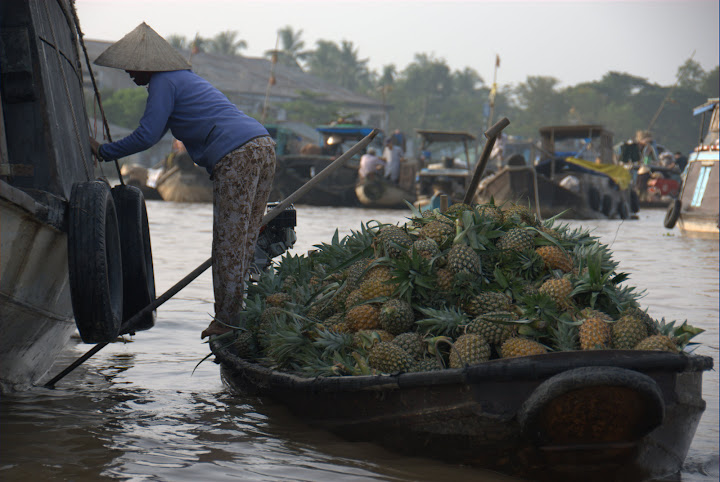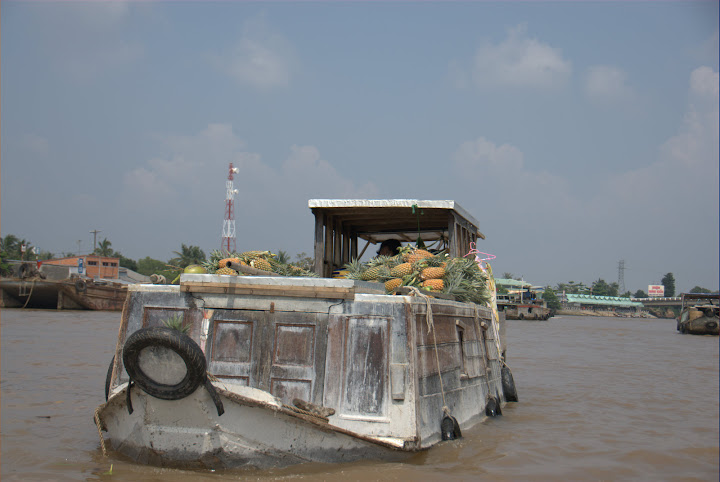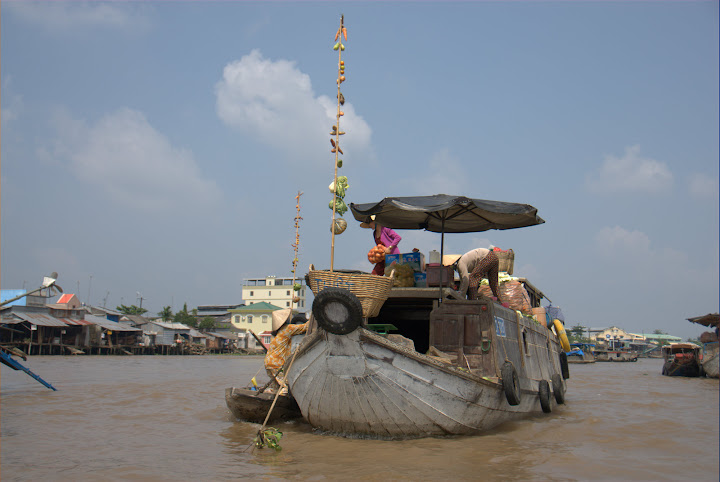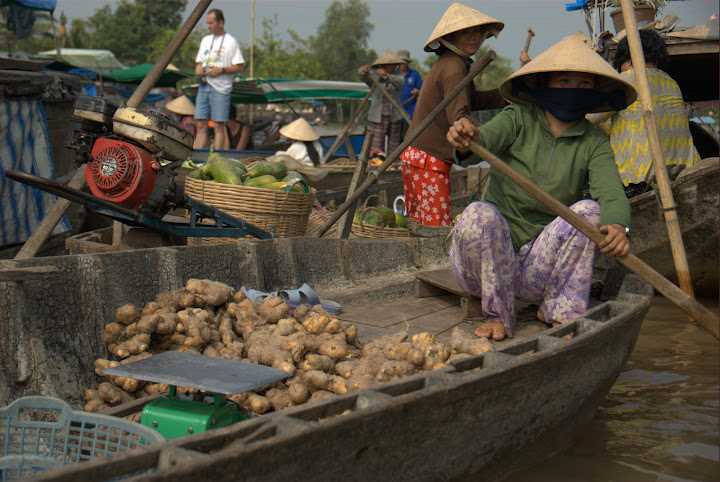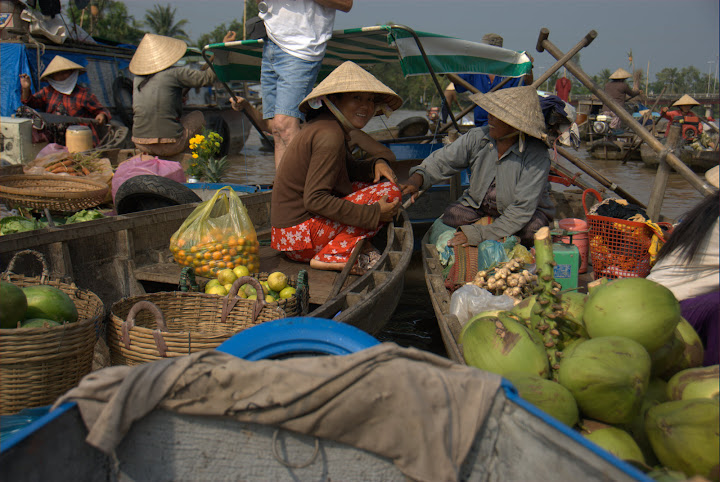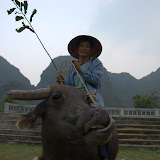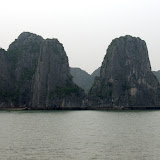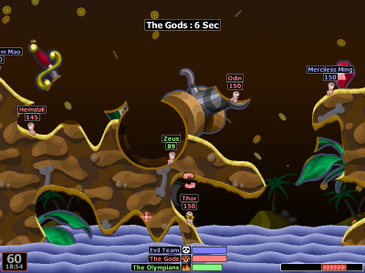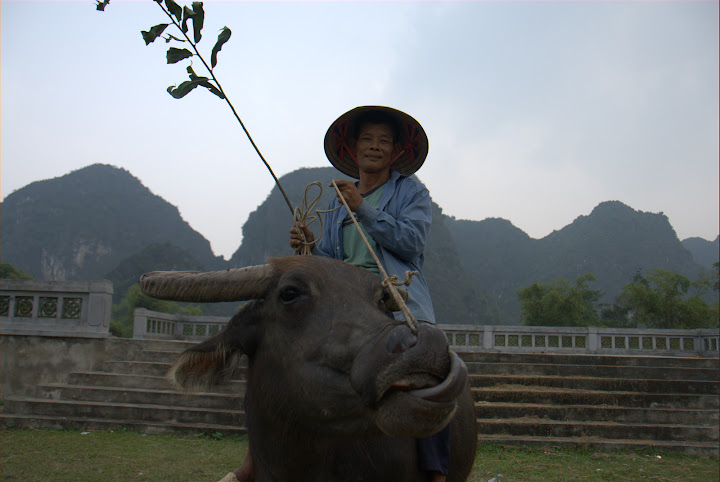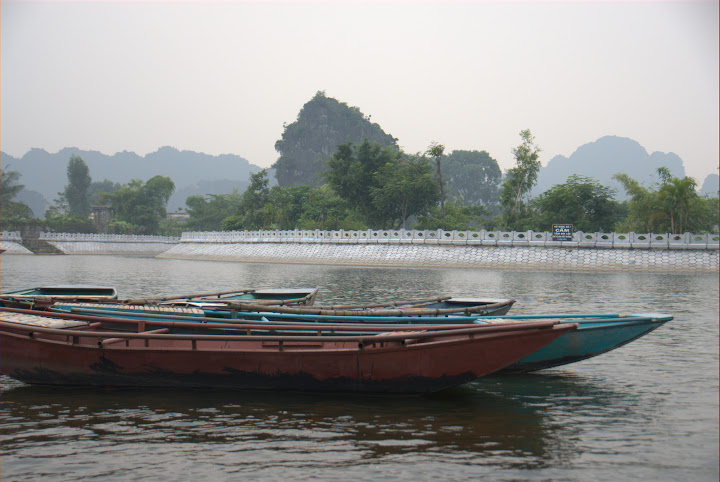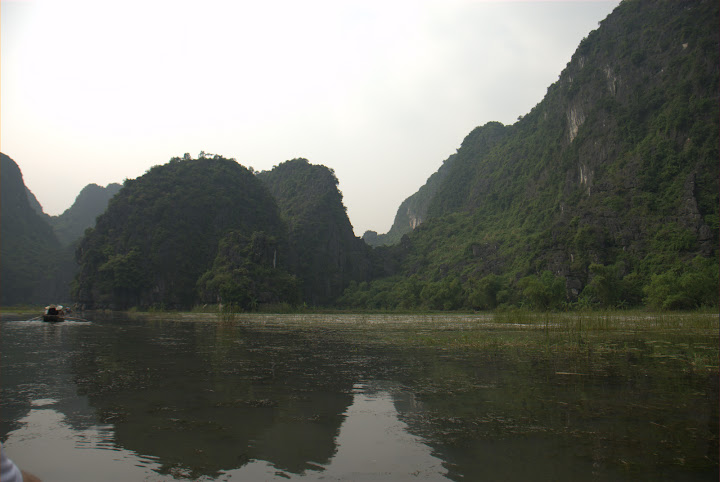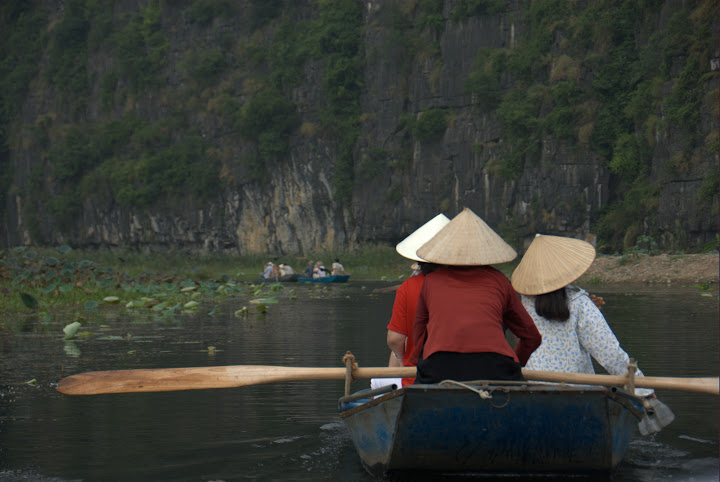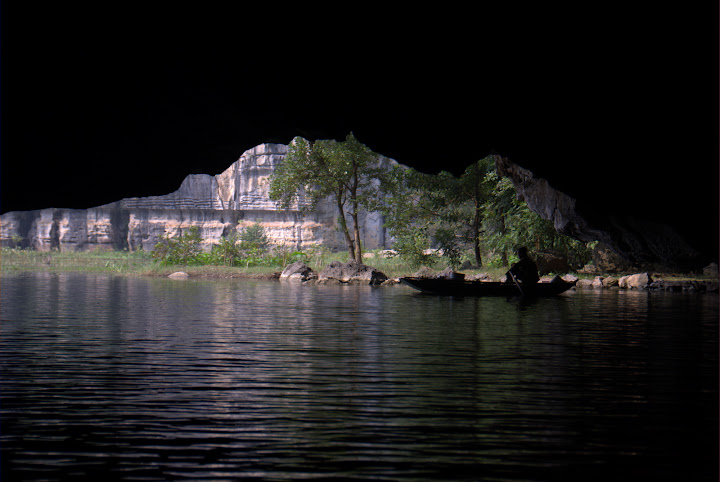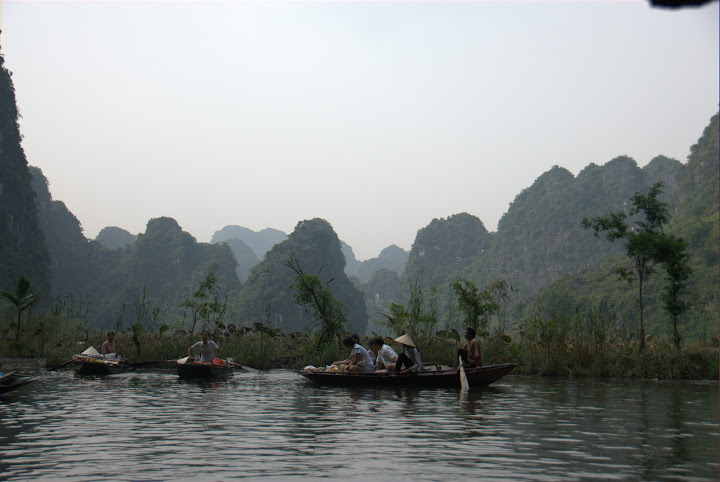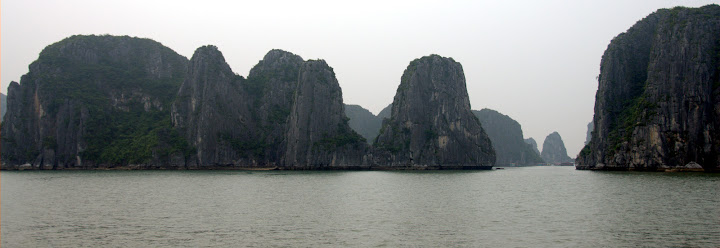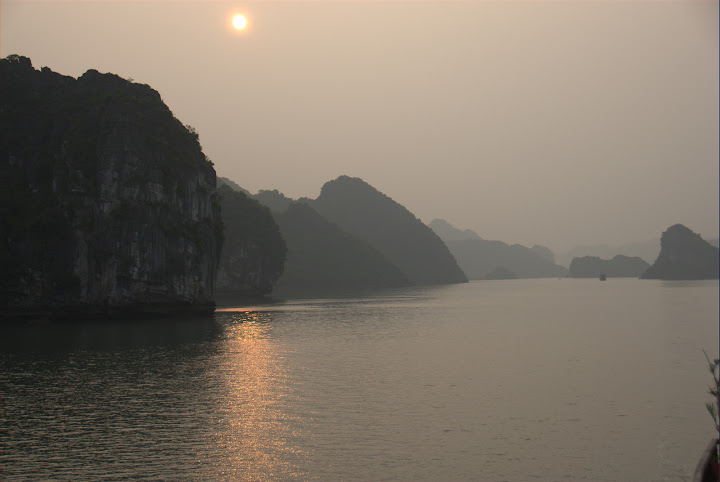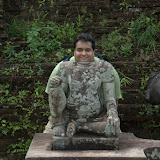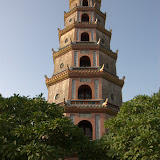Albums for this blog can be found at:
And Now on with the StoryI spent the few days following my motorcycle trip in a nice town called Hoi An. Hoi An used to be the major port of southern Vietnam for about 1000 years and has a nice old town you can walk around in. Most houses are about 300 years old (hurricanes come by and destroy the town every few hundred years). Merchants from China, Japan, India and even Portugal used to come to Hoi An, trade for silk, spices and other goods and sail back.
Today most of the houses are used as restaurants or tourist shops though the structures are well maintained.
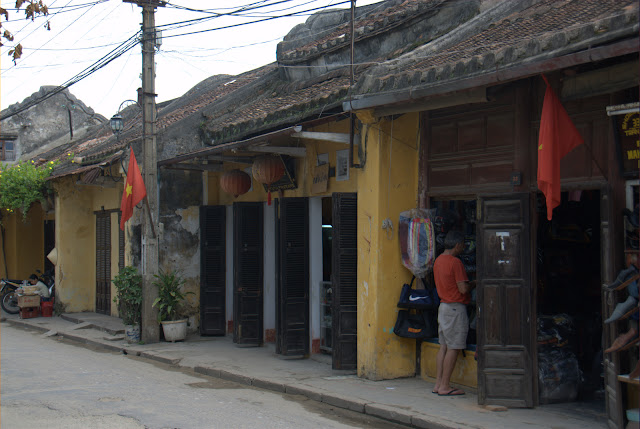
The ferry crossing in Hoi An also lets you take your bicycle across. This is especially important for the kids.
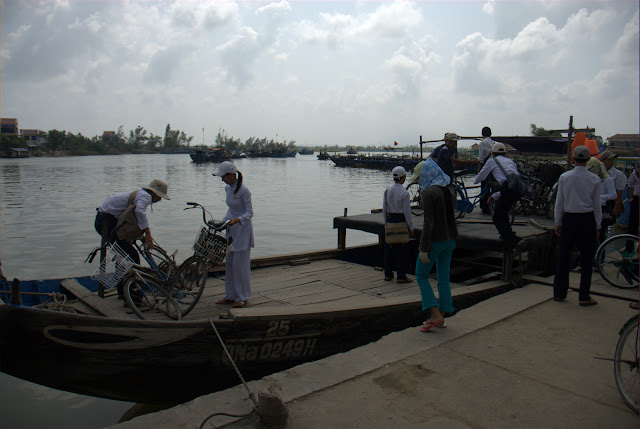
I also finally caught a good picture of school girls in the traditional Vietnamese garb. Notice the face masks. There are two reasons for them. First of all, they help keep the smog and dirt out. But most importantly, in a country that considers whiter skin as more beautiful, girls keep their faces hidden from the Sun to keep them paler.
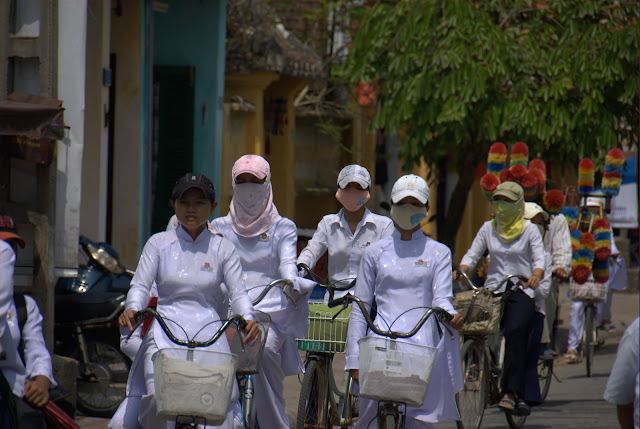 The Chams
The ChamsHoi An also serves as a jumping point for a day trip to My Son. My Son is the historical holy city of a minority called the Chams. The buildings are from 1000 years ago when the Chams were the growing empire in the area. In their heyday their kingdom reached all the way into Cambodia and they fought the Khmers, builders of Angkor Wat.
The buildings are built of bricks and carvings were made into the bricks after they were placed. To this day, no one knows how they glued the bricks together but they hold quite well.
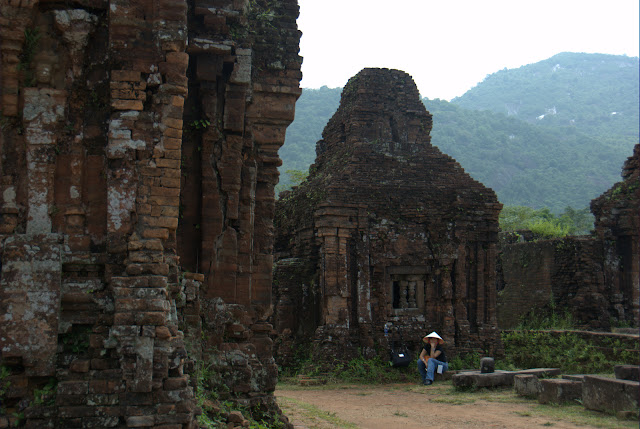
The Chams were Hindu and the statues and decorations in the ruins reflect that. According to the tour guide, the head of this statue was either cut away by the Chams when they deserted the area or else carved off by the French as an archaeological treasure.
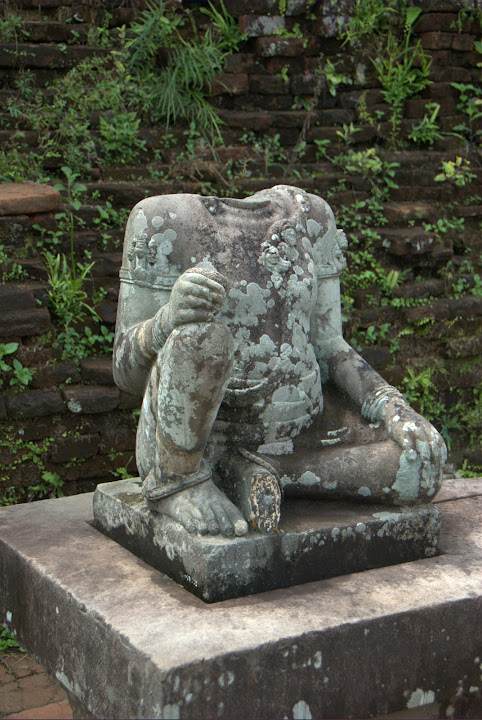
During the Vietnam war, there was a small VC base in the ruins. The US responded by bombing most of the buldings that were still standing so unfortunately not that much survived.
When I got back, my feet hurt enough that I figured I'd try a foot massage. I remembered seeing a sign next to the hotel and so I went in search of the place. There was a large picture of a foot with reflexology-style markings on it. The sign said "Hair and Nails Salon" but I did the typical westerner's all-asians-know-about-good-massage-so-what-if-its-a-salon thing and went in. $7 for 45 minutes of massage. I said fine.
Imagine my disappointment when the girl brought over one of those automatic foot massage buckets and had me place my feet in it. She turned it on and I tried to figure out if I need to sit there for 45 minutes before I pay the fine and leave.
But 5 minutes later it turned out that all-asians-know-about-good-massage-so-what-if-its-a-salon and the bucket was just to clean my feet. She proceeded to rub them dry, then had me move to the massage room where she and a guy that took over later did amazing things to my feet. Amazing! If you're ever there, I have the card.
Home of the Kings
My next stop was Hue. Hue, a city on the Vietnam coast, was home to the last chain of kings to rule Vietnam. This is where the Nguyen emperors set up camp, built their capital and their palaces. The old city is an amazing 2.5km by 2.5 km surrounded by a wall. Today it is inside the modern city. Inside the old city is the forbidden purple city, home to the emperor himself. The city was badly damaged during the fight with the French and later the locals took bricks and wood from it to build houses. Few of the buildings survived and some of the palace grounds were used to grow food.
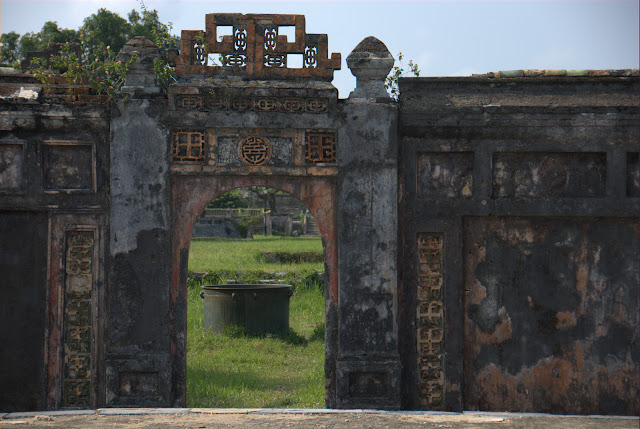
When I got back home (to the US) from the trip, the number one question on my mind was: are my fish still alive?
I left my aquarium with somewhere between 20-30 guppies swimming in it and left for five weeks. The light turns on and off automatically, the filter is strong and will take care of the water quality but food was a question mark. I use an automatic fish feeder and I made sure it was full before I left, but was that enough food?
I came up the elevator with all the bags, opened the door and looked. There they were:

But the feeder was empty!
I have two theories about this:
1) In the time honored Hollywood tradition, I came home just in time. The last day they had food was day-before yesterday and any additional day delay would have killed them all.
2) In the time honored Hollywood tradition of copying film plots, my fish acted out the script of
Alive, feeding off their dead until I arrived.
Whichever it was, there still about the same number of fish in the tank, plus a few newly born ones which are usually snacks for the older fish so I'm going to go with option 1.
In the forbidden city, tourists can pay a bit of money to feed the schools of Koi fish that swim in the ponds. It's a nice system :)
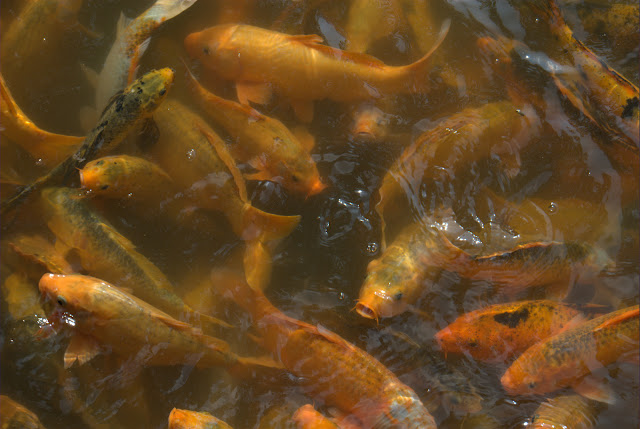
Hue has a few other attractions like this 7-story pagoda
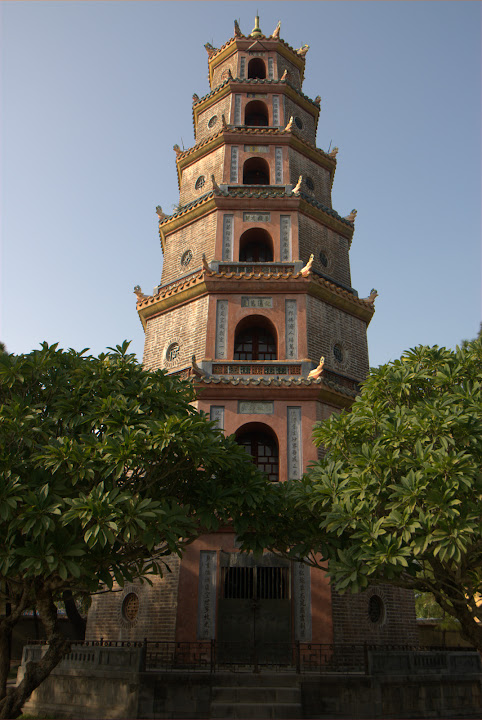
or this old covered bridge outside of town,
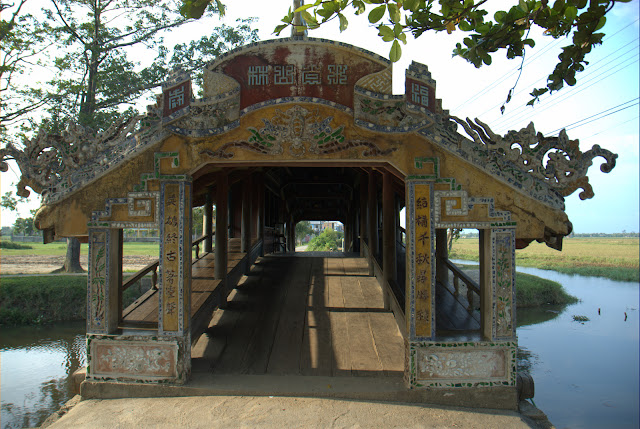
but the main event is a ride up the perfume river to see the palaces / tombs built by the emperors. The boat makes its way up the river stopping from time to time to let us off to see one or another of these tombs. Some of them are on the river bank, some are a couple of kilometers inland.
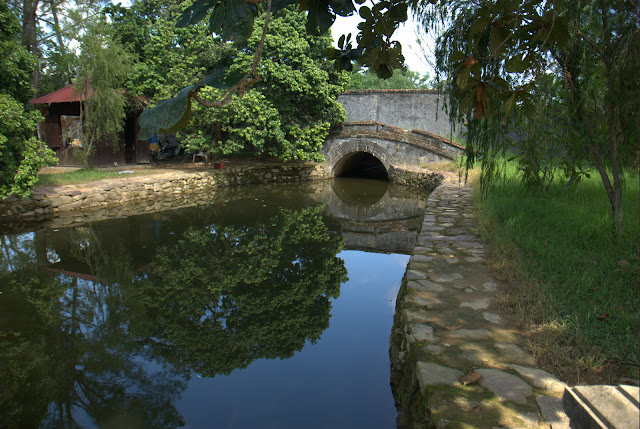
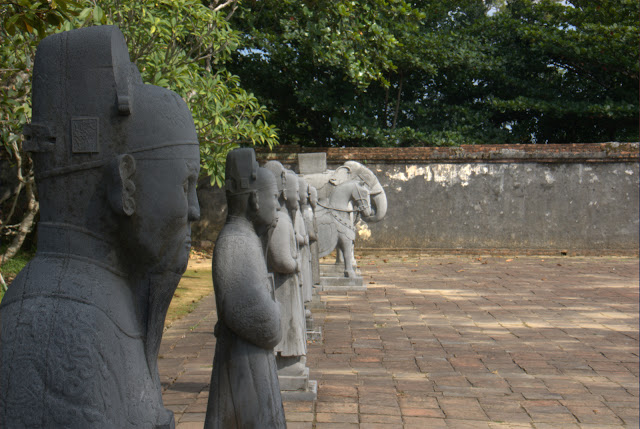
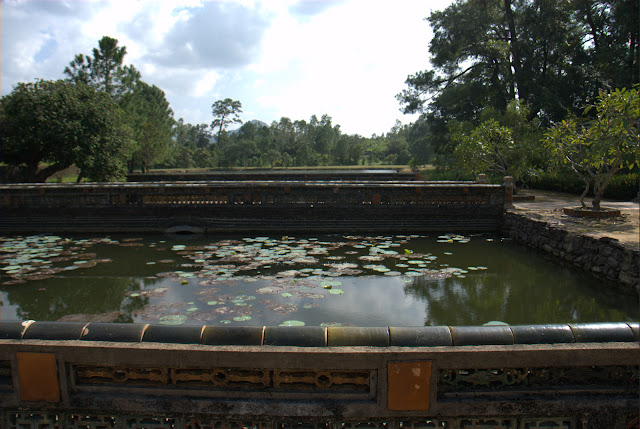 Leaving Hue
Leaving HueI then took a night bus to my next destination. 13 hours and you can try and sleep as many of them as you can. I actually did pretty well considering. I had an interesting experience getting the ticket. The hotel I was staying at in Hue was selling tickets for $9. The bus left at 6p and so I wanted the room until then. But they wouldn't let me keep the room so late without paying the $4 half a day rate.
And the store across the alley was selling tickets to Hanoi for $6.5. So I went back to the hotel and said I'll buy their ticket for $9 if they let me keep the room. They politely explained that was not possible. When I threatened to buy the ticket across the street instead, their ticket price started going down. We stopped at $7, at which point I said I'll buy it from them only if they'll give me the room till 6p for $2. They said yes.
Now I think math in Vietnam works the same as in the rest of the world. So why does ticket + room till 6p for $9 different from ticket for $7 plus room till 6p for $2?
The Towers of...Hanoi is the capital of Vietnam. It has a different atmosphere from Saigon. It feels more raw even though the tourist industry is going strong. I got a room at a hotel in the market and had to suffer through all the fishwives (really, they were) pointing at me and discussing me whenever I passed through. I don't think they were using terms like "Lucky Buddha" to describe me up in Hanoi. Much more raw.
I went to see the first university in Vietnam, the Temple of Literature. Established in 1070, it was a place for high learning for Mandarins of the king's court.
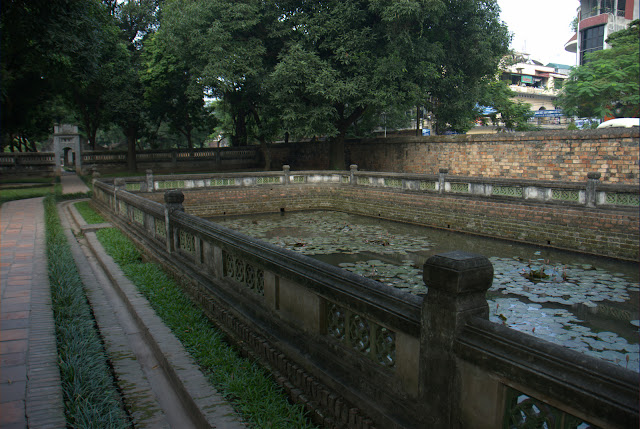
In 1484, the emperor decided to publicly recognize the students passing their doctorate tests. The idea was to create a large stone stelae and carve the names of students and their home towns onto it.
There are four animals the Vietnamese consider long lived and therefore suitable for carrying the stone tablets on their backs. The Phoenix, the Unicorn, the Dragon, and the Turtle. For extra credit, can you pick the one that is not exactly like the rest?
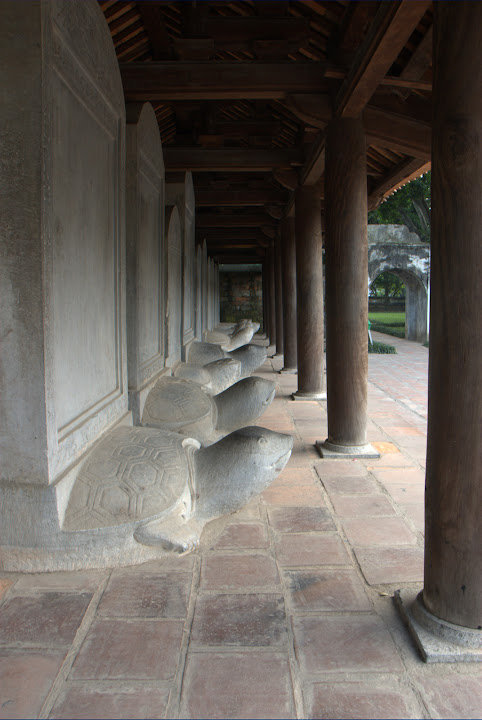
I wonder if they chose turtles because they had live examples to copy from or because they have all the qualities of a table - flat backed on four short sturdy legs.
Walking around the Temple of Literature trying to find the entrance I saw this guy who took a break from it all. He strung a hammock between the street light and the wall and went to sleep.
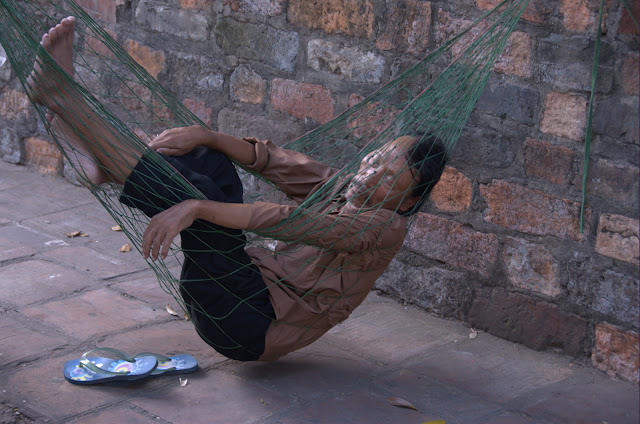
Another of Hanoi's interesting spots was the one-pillar pagoda. The original was destroyed by the French when they left Vietnam but was rebuilt by the Vietnamese.
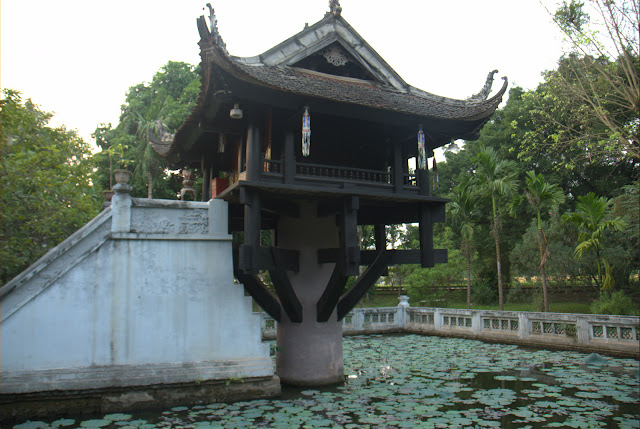
Near the one-pillar pagoda was a larger temple where I caught this monk ringing the bell.
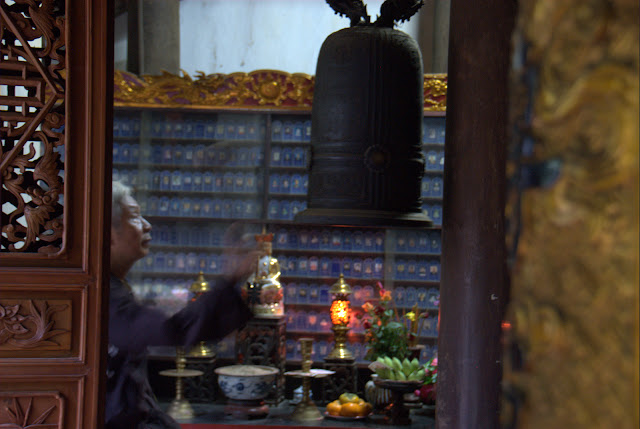
*
Of Cabbages and Kings is a line from
Lewis Carrol's nonsense poem
The Hunting of the Snark.
Technorati Tags: Vietnam, Hoi An, My Son, Chams, Hue, Perfume River, Hanoi, Lewis Carrol, Eran Davidov, Travel Blogs Del.icio.us Tags: Vietnam, Hoi An, My Son, Chams, Hue, Perfume River, Hanoi, Lewis Carrol, Eran Davidov, Travel Blogs








 That's it for Vietnam.
That's it for Vietnam.
